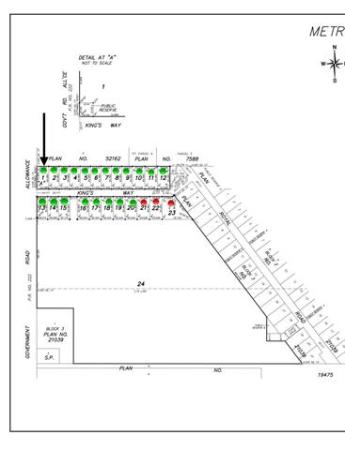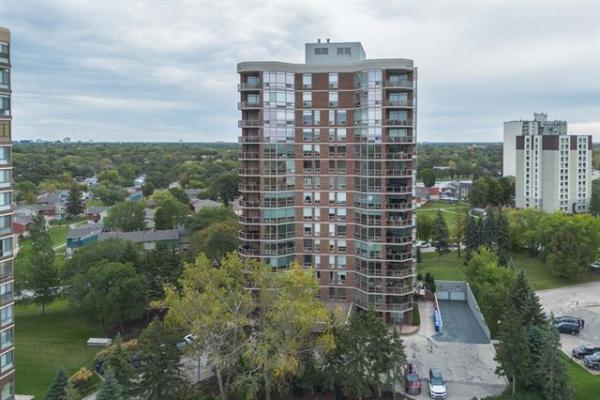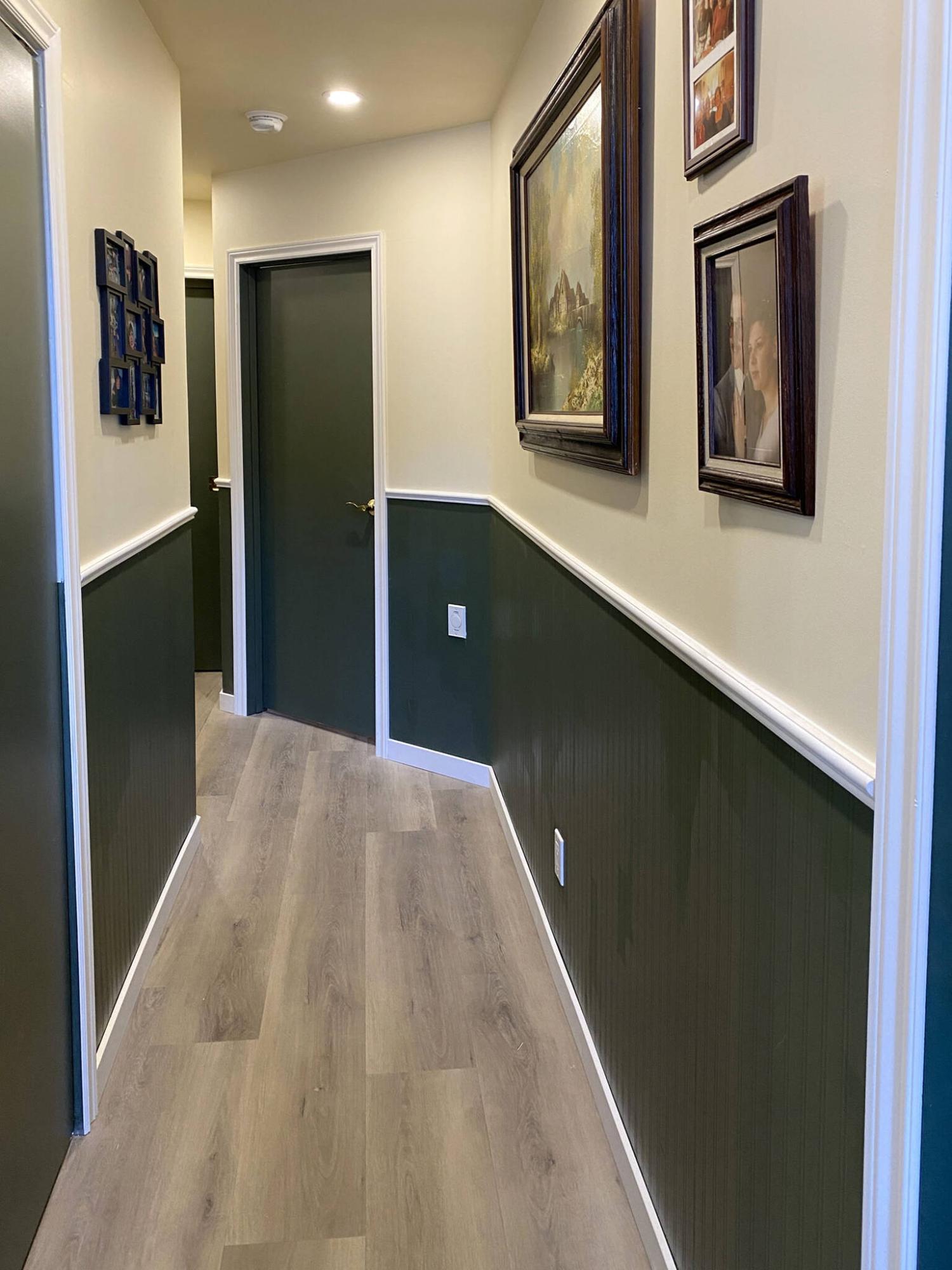
MARC LABOSSIERE / FREE PRESS
White baseboards are complemented by the replacement of door casings and chair rails.
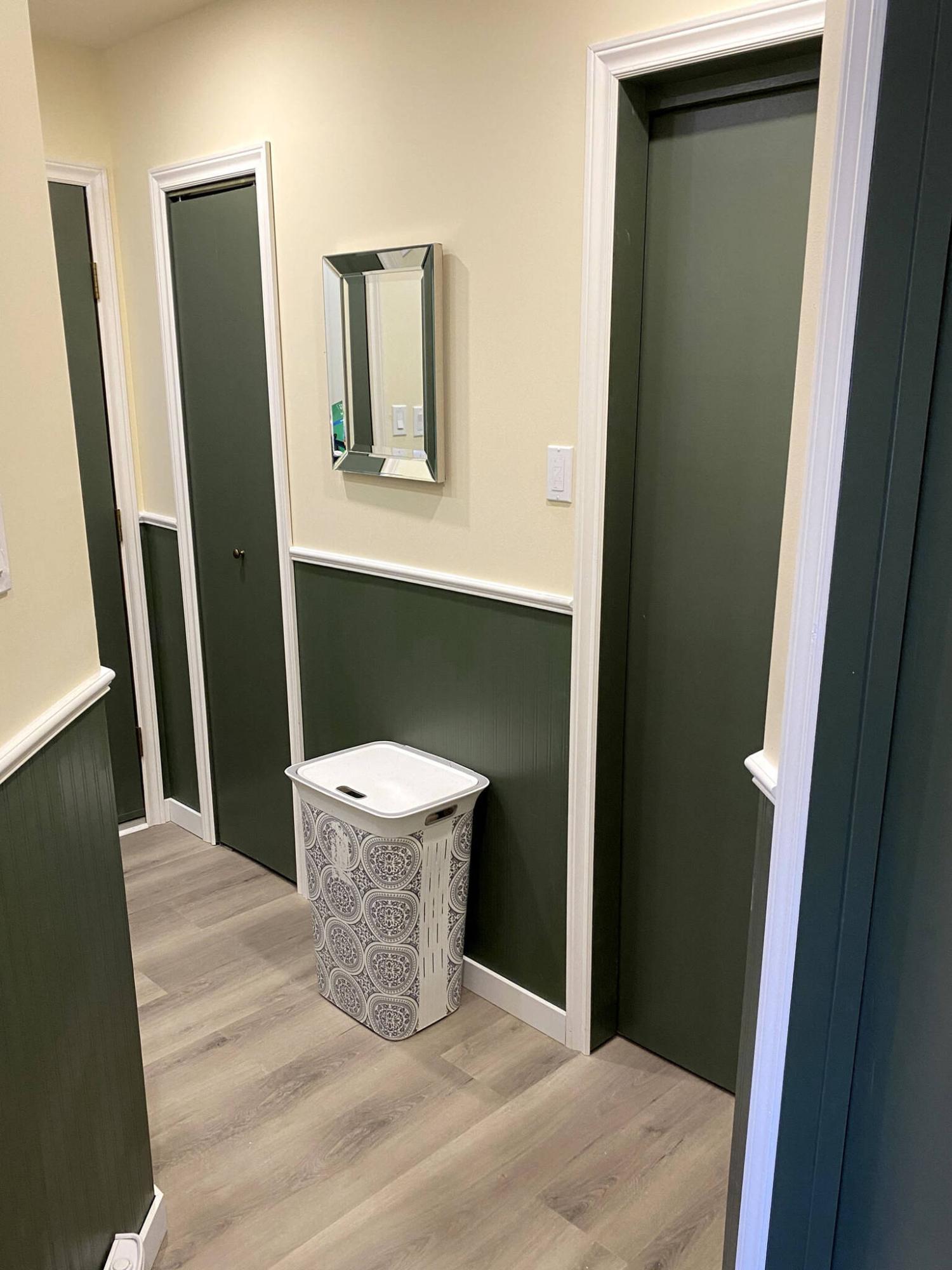
MARC LABOSSIERE / FREE PRESS
The white trim clearly sets off the colours of the upper and lower walls.
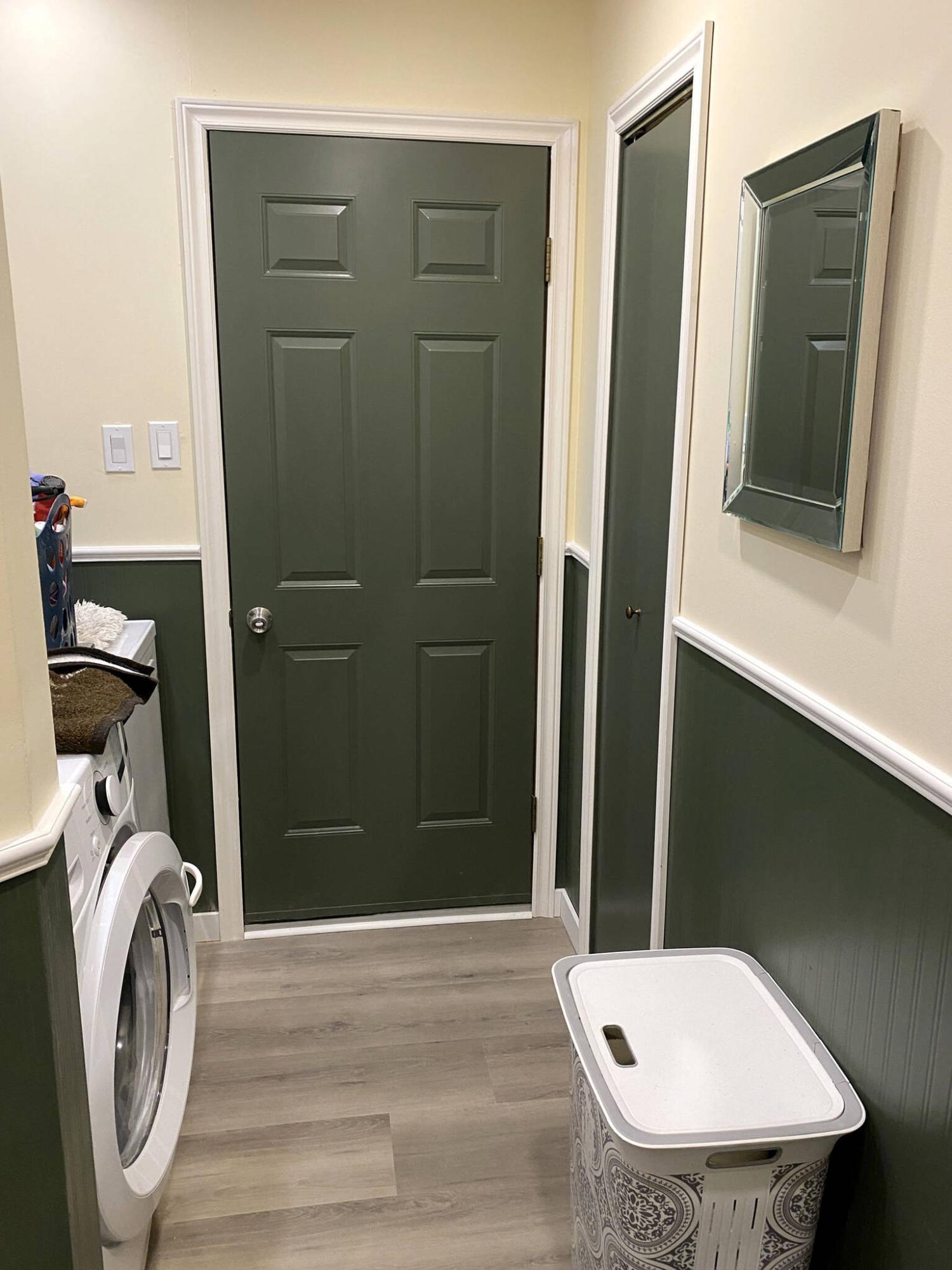
MARC LABOSSIERE / FREE PRESS
White trim outlines the backdoor entryway.
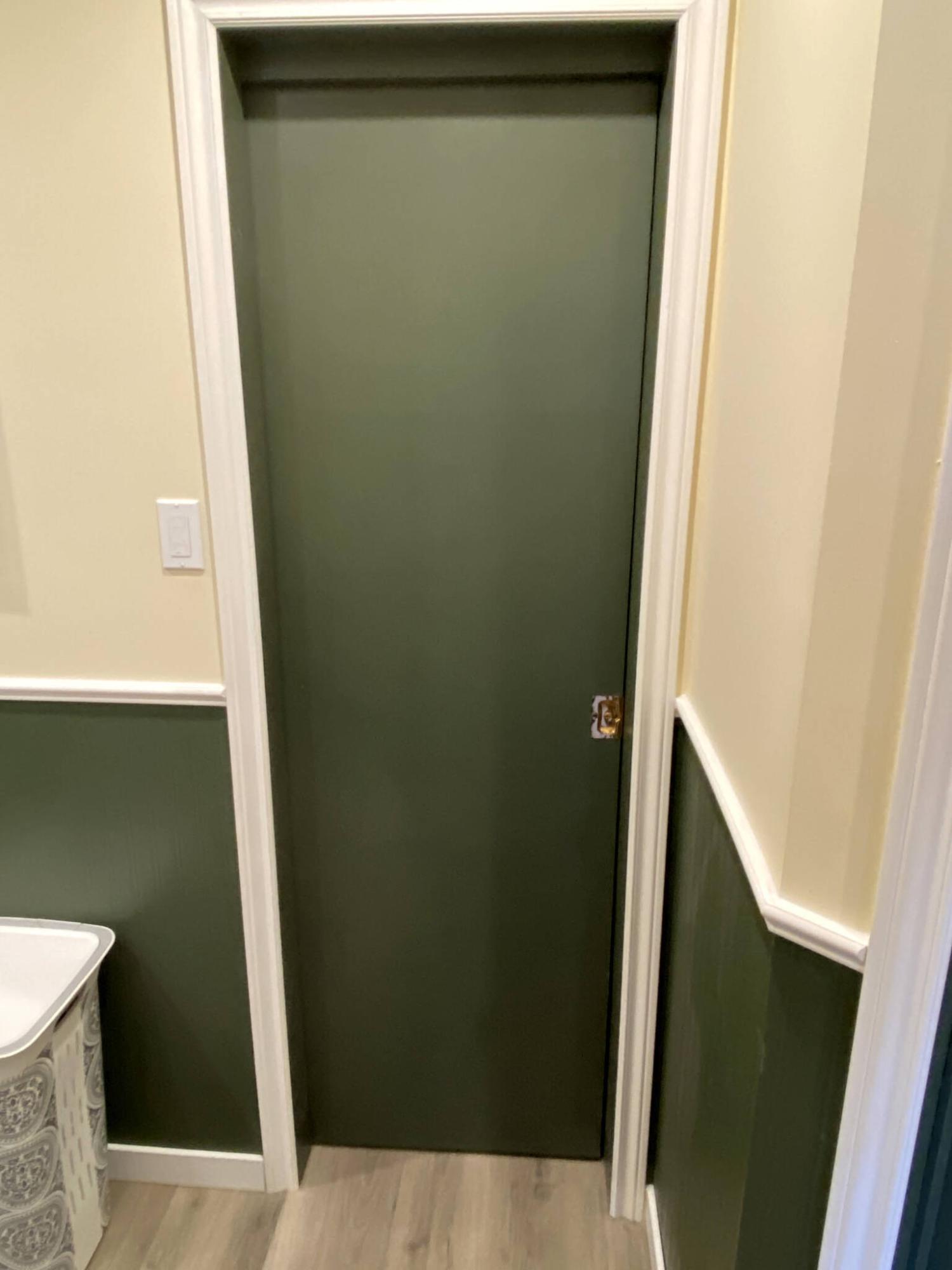
MARC LABOSSIERE / FREE PRESS
Although the old trim was retained in the bathroom, new white trim surrounds the bathroom’s pocket door.
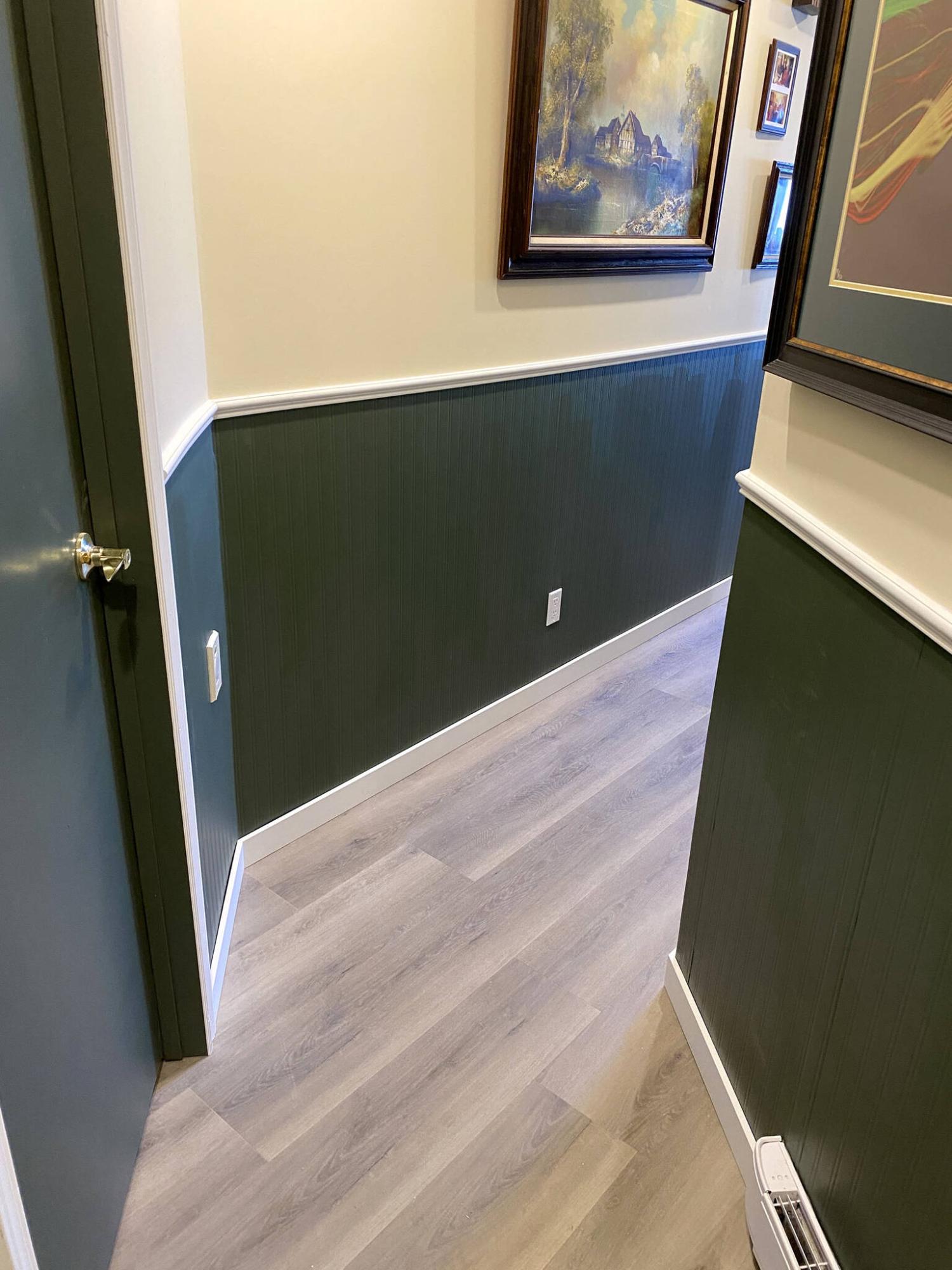
Marc LaBossiere / Free Press
The wall angles are highlighted by the newly introduced white baseboards, casings and chair rails.
Flooring replacement always requires a few extra steps.
Beyond removal of existing flooring to make way for the new (as well as any sub-floor preparations that arise), the casings and baseboards are best removed to be re-installed later in the flooring installation process for the best outcome. If the space is new to the home, sourcing new trim is the only option, but for an existing space, recycling existing trim is not always as straightforward as may be expected.
The installation of vinyl-plank flooring with pre-mounted underlayment has become extremely popular over the past few years. At a recent job site, the homeowners decided to introduce new vinyl throughout their main floor, and soon thereafter chose to include the second floor as well.
Preparation for this installation involved removal of the old carpeting and underlayment, which in turn required removal of the baseboards. Although recycling the existing baseboards had been the original plan, the homeowners decided to upgrade the baseboards to a beefier squared style, to modernize the overall look of the home.
Next, squeaky areas of sub-flooring were secured and old carpet staples were extracted before the installation began.
Once the vinyl had been fully installed, new baseboards were systematically implemented around the house. The choice to replace the old baseboards was in retrospect fortuitous as the overall floor elevation had decreased by nearly half an inch. The height of the vinyl planking barely exceeded three-eighths of an inch, whereas the combined height of old carpeting and underlayment surpassed three-quarters of an inch.
The implications of this discrepancy were twofold: the paint-line of the existing walls would show, had the old existing baseboards been recycled, and moreover, the existing casings (which were to be retained) fell short along the floor.
Once the new baseboards had been completely installed, it was apparent the existing casings would not suffice. For some reason, the existing trim in the hallway had been painted the same colour as the lower wall, which was quarantined by chair-rail trim set at roughly four feet from the floor.
With the introduction of the new white baseboards, the hallway’s appearance seemed odd, and felt somewhat unfinished. I would have been remiss not to suggest to the homeowners that the entire array of trim throughout the hallway be updated to match the newly installed baseboards. After showing them a few examples, they agreed and the extra task was added to the project.
Once the old casings and chair-rail trim were removed, the verticals of the newly chosen casings were systematically cut to the appropriate lengths, as were the horizontal sections above.
One slight oversight led to an extra step. Because the new casing was a quarter-inch wider than the old, every section of baseboard adjacent to a vertical casing would need to be cut back by that measure. Fortunately, this didn’t require removing any of the newly installed baseboards as my oscillating tool and steady hand did the trick.
With the casings fully installed at every doorway, the final task involved cutting the chair-rail trim to the appropriate lengths, and installing it along the wall between the doors. The new chair rail was also broader than the old, creating a much-desired bolder look that had been lacking previously.
The decision to forgo recycling the old casings and chair rails proved to be the appropriate course of action. Not only does the new white trim clearly outline the wall colours throughout, but the bottoms of the casings now meet the vinyl flooring without any gaps, an issue that would have been impossible to overlook had the old casings remained in place.
Although the decision to replace casings and chair rails ended up adding an extra day to the overall project, this will prove to be time extremely well spent, as the sharp appearance of the white trim will surely enhance the interior’s appeal for many years to come.
RenoBoss.Inc@outlook.com

